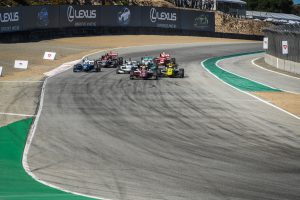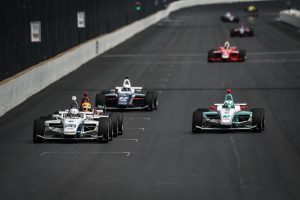“I think the way they have it programmed when the driver wins, he has a scholarship to go up to the next series, it’s amazing. I think they’re doing it better than any other series.”
That was Haas Formula 1 driver Pietro Fittipaldi’s take on the Road to Indy system, which has a fantastic record of helping its drivers to reach IndyCar.
Coincidentally, the Fittipaldi name is one of the big talking points this year as Pietro’s brother Enzo will race in the second-tier Indy Pro 2000 series, after leaving the Ferrari Driver Academy and FIA Formula 3 in his wake.
The Indy Lights championship didn’t even run last year but it’s back with big names and even bigger prizes in 2021, while the third-tier USF2000 championship boasts one of the stories to watch in motorsport this season as the Force Indy team looks to make racing more accessible to African Americans.
With so much to discuss ahead of the 2021 season, Formula Scout junior single-seater expert Ida Wood and long-time Road to Indy media aficionado-turned series representative Rob Howden join our American Editor Jack Benyon to pick out things to watch from the ladder this year.
The Race will be showing the 2021 Indy Lights season live on its YouTube channel. Tune in for the first race on Saturday.
Big names on show
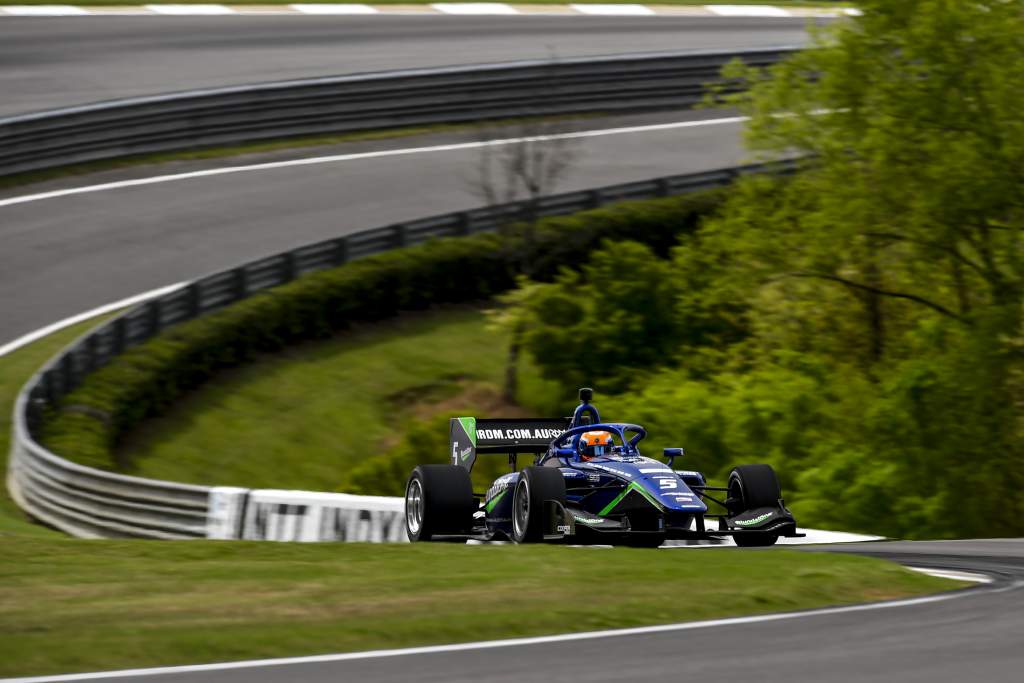
Carlin is returning to Indy Lights this year, while Enzo Fittipaldi will join a growing number of drivers coming from Europe to the Road to Indy
RH: The return of Indy Lights after a year’s hiatus has been highlighted by the return of previous champions and worldwide junior series powerhouse Carlin Racing.
Coming back with rookie Alex Peroni, who finished 10th last year in the FIA F3 Championship, alongside fellow rookie Christian Bogle, makes them a bit of an unknown. That said, Peroni’s fondness for tough street circuits could help smooth his transition with St. Pete positioned as the second race on the schedule.
Enzo Fittipaldi’s announcement with RP Motorsport for Indy Pro 2000 gives us another legendary name.
JB: Rob’s right, Carlin is a bit of an unknown, but Peroni is much better than his Campos FIA F3 car allowed him to go and the Carlin squad has Jay Howard behind it for its 2021 assault. It won on its debut with Ed Jones in 2016 and there’s no reason it can’t again – even if Andretti is the class of the field.
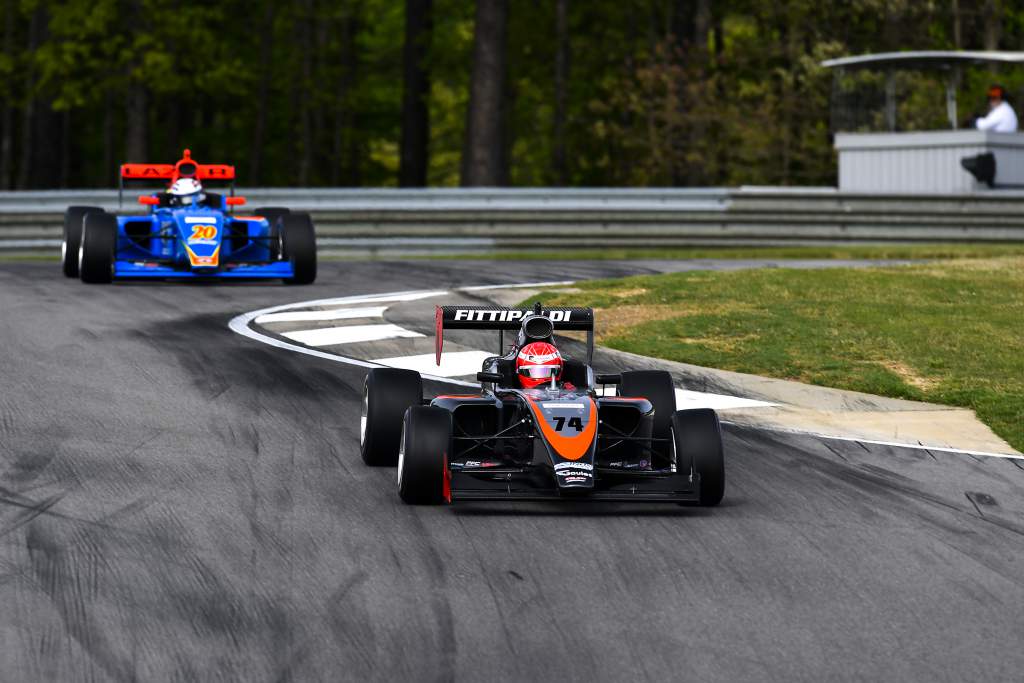
Fittipaldi should be an immediate title hopeful in second-tier Indy Pro 2000 with Andretti after it was strong in the series with another F3 convert in Devlin DeFrancesco last year.
It’s a process of rebuilding now for Fittipaldi but even if his still hopeful F1 dream is over he has every chance to forge a path to IndyCar.
IW: Carlin knows how the inclusion of the halo impacts the centre of gravity on cars at this level, and has a driver who knows what that feels like, so the team is well prepared for being right on the mark despite having several years out. It’s not just the name on the truck that will decide how the team fares, but who it deploys on the engineering side.
Fittipaldi’s (kind of) debuted in IndyCar in the iRacing Challenge, and he looks more comfortable in the American racing scene than he did in Europe. His move to IP2000 could be inspired, especially with the might of Andretti and the utterly committed RP behind him. What’s even more encouraging, but will also make winning the title harder, is that F3 star Enaam Ahmed is his team-mate. He’s a driver with the talent, but not the budget, to be at a higher level.
Can Indy Lights bounce back strong?
It missed the 2020 season due to the pandemic, but its low grid numbers weren’t good enough for new IndyCar owner Roger Penske either. How’s it doing now?
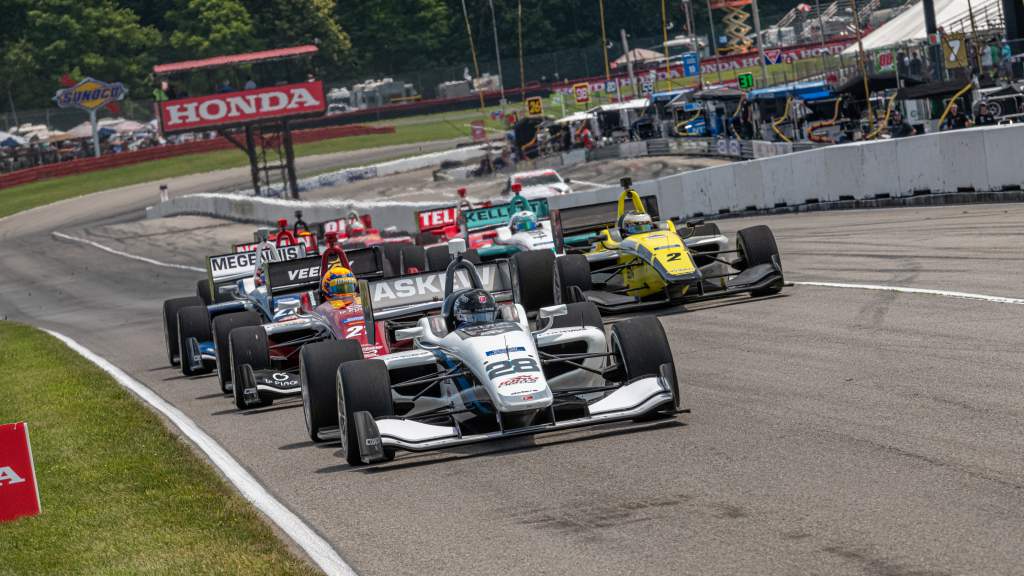
JB: Ultimately Roger Penske wanted the series owned by IndyCar to offer a double-digit entry this year on its return and it will manage that.
Despite targeting IndyCar teams it has only managed to attract Carlin and it has lost its biggest race in the Freedom 100 on the Indianapolis oval.
However, the Road to Indy has honoured its scholarship winners so even though Indy Lights didn’t run last year, both Kyle Kirkwood (2019) and Sting Ray Robb (2020) have earned paid-for spots in the series via Indy Pro 2000 titles. I don’t know another series in the world that would do that.
The top three in the championship will get a test with a big IndyCar team post-season too, which gives them a chance to impress. Don’t forget, the champion gets enough cash to cover doing three races and the Indy 500.
All in all, Indy Lights was struggling before the pandemic but its grid number is up, it’s added a halo for safety at a minimal cost, it’s made good on its scholarships and increased its prizes despite the pandemic. It must be congratulated for that.
RH: From my position within the series, the amount of positivity and momentum for Indy Lights is high. With 13 confirmed drivers and more expected to announce at least partial programs, I like the direction that the series is heading.
Andersen Promotions increased the IndyCar scholarship to $1.1 million for the 2021 champion, and the top-three in the championship are also guaranteed IndyCar tests. Our chassis and engine package is dialled in, and I expect that the addition of our new halo-type device will make the series more attractive to Europeans who want that extra level of safety.
This momentum is also being fuelled by the high potential for as many as three new teams debuting in 2022.
IW: I’m so excited for Indy Lights return, and while it’s great to see the series’ biggest grid since 2017 it’s worth pointing out that its most recent seasons have really proved you only need two cars to make a great race. The battles between Colton Herta and Patricio O’Ward will sit long in the mind.
George Steinbrenner IV co-owned Herta’s entry back in 2018, and he’s now back in the series with DeFrancesco, which is a great investment to see.
Who to watch in Indy Lights
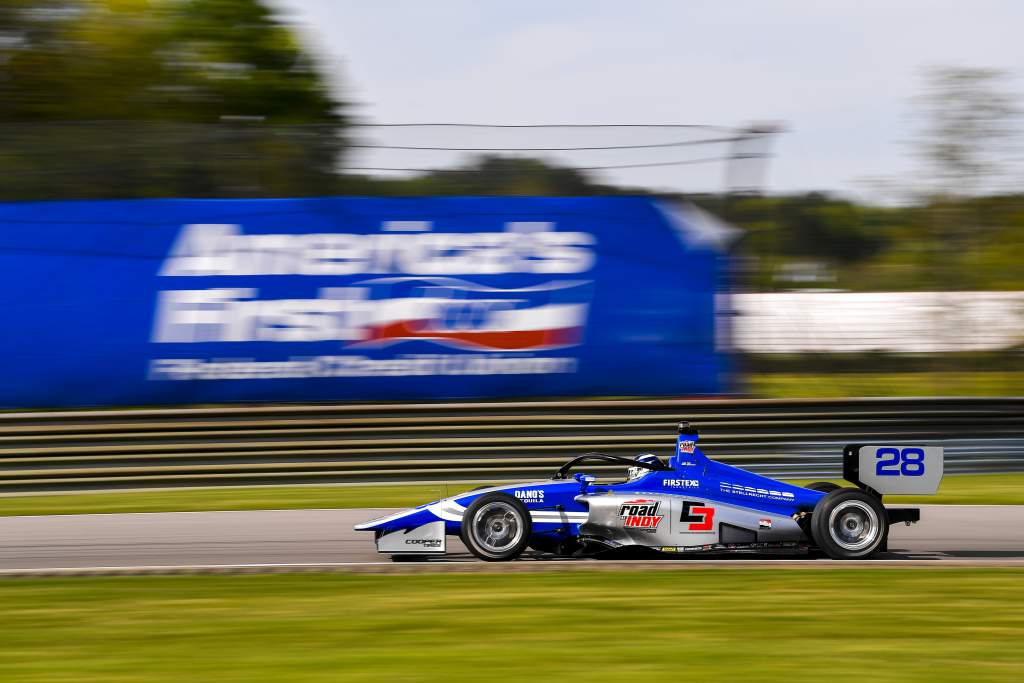
RH: The Indy Lights hiatus in 2020 stacked up the talent for its return, highlighted by a pair of Road to Indy scholarship winners with 2019 Indy Pro 2000 champ Kyle Kirkwood and reigning title winner Sting Ray Robb.
Add in 2020 Formula Regional Americas champion (and 2018 British F3 title winner) Linus Lundqvist with the HPD scholarship, and we have three guys who are used to winning.
Toby Sowery and Robert Megennis are previous Indy Lights race winners from 2019, where they beat Oliver Askew and Rinus VeeKay on occasion. David Malukas, Danial Frost and Devlin DeFrancesco are all former Indy Pro 2000 race winners, and Malukas and DeFrancesco finished runner-up in the FR Americas and Indy Pro 2000 series championships in 2020, respectively.
Indy Lights has the champion and vice-champion from both of their US feeder series from last year. You can’t ask for much more.
JB: Providing Carlin can hit the ground running, let’s add Alex Peroni to that list. He was much better than his F3 results show and with only one oval on the calendar the calendar should suit him.
View the Indy Lights entry list here
https://www.indylights.com/teams-drivers
IW: Taking everyone’s respective 2020 programmes into consideration, and what they’ve already been up to this year in sportscars and beyond, I think DeFrancesco is the driver best-placed to win.
He learned the American racing scene and the Road to Indy circuits in the closest possible car to Indy Lights via IP2000 last year, is staying with the same team he raced for last year, has experience of racing a halo-shod car and built up his high-downforce experience by racing in the Daytona 24 Hours. His rivals have some of those factors going their way, but not all four like DeFrancesco does.
Indy Pro 2000 on the comeback trail
The series fell to six entries before it gained a new car for 2018. We’re seeing the shoots of its recovery now
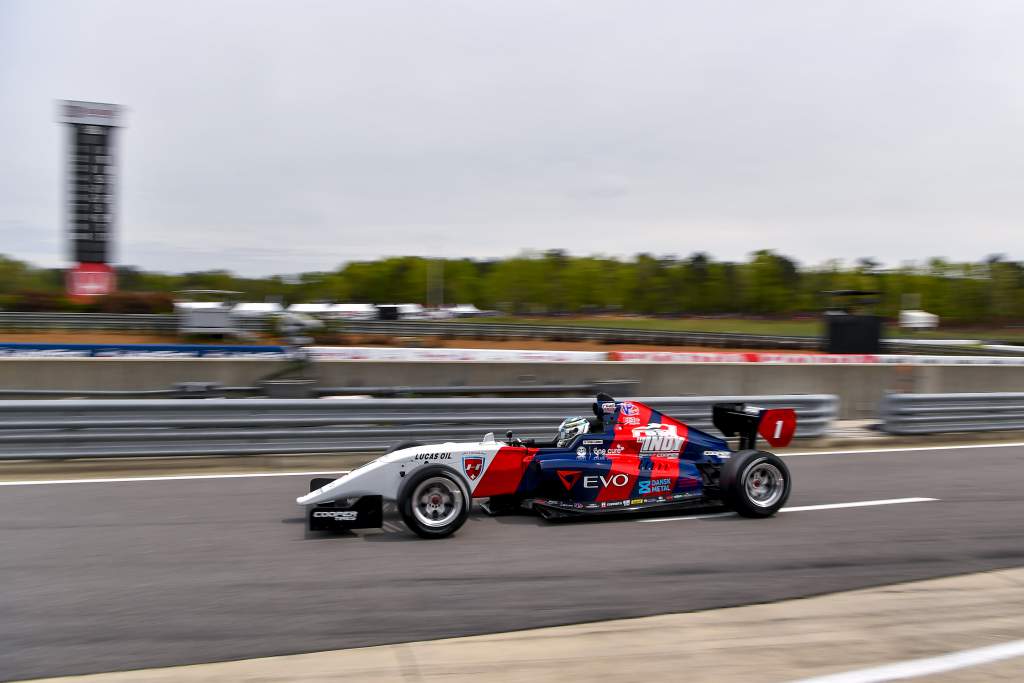
RH: We have growth across all three series for 2021, which is obviously exciting, but I’m particularly thrilled with the increasing interest and momentum in our Indy Pro 2000 series.
The programme transitioned from the old Pro Formula Mazda car to the new Tatuus PM-18 in 2018, and we had to completely press the reset button. In my opinion, this is the primary reason for the dip in numbers in Indy Lights in 2018 and 2019.
Indy Pro 2000 is our internal pool to develop Indy Lights rookies and in the final season of the old car in 2017, we had only six full-time drivers. As a result, our Indy Lights fields felt the pain.
The Indy Pro 2000 programme has solidified and there’s 17 cars confirmed as it stands, and that size and strength will feed Indy Lights for 2022 and beyond.
The kicker is that it’s also going to be the strongest field we’ve ever seen in this program. Over half the Indy Pro 2000 field are proven Road to Indy winners.
View the Indy Pro 200 entry list here
https://www.indypro2000.com/teams-drivers
JB: With the last two USF2000 champions – Braden Eves and Christian Rasmussen respectively – present, I think they’ll be in contention, while Manuel Sulaiman was strong in testing. However, if they can adapt quickly, I can’t look past Ahmed and Fittipaldi as the favourites.
Good to see the field in double figures again and providing that support the ladder needs. If any of the lower-rungs suffer then obviously there’s a knock-on effect higher up. The more drivers competing, the better chance for strong competition that breeds learning.
Mixed reviews on the calendar
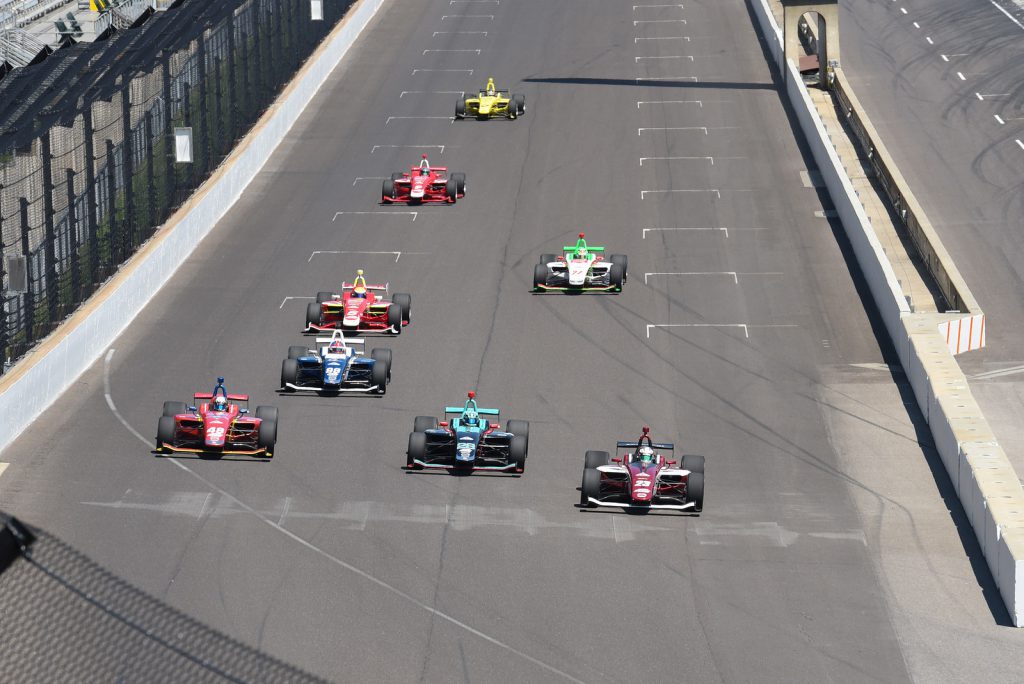
IW: The loss of the Freedom 100 (and the one-off sponsors you would attract) can’t be understated and I don’t think a return to Detroit’s Belle Isle street circuit quite makes up for that. But to be on a street circuit at all is a treat when fans of junior single-seaters could only watch Chinese Formula 4 for that type of action in 2020.
View the Road to Indy calendar here
https://www.indylights.com/schedule
RH: Overall, I think we’re all very happy with the calendar for the most part. Having the Freedom 100 put on an indefinite hiatus is certainly a personal disappointment as I’m sure it is for many others, but my hope is that our solid 2021 entry list and the momentum that is being fuelled by encouraging news on the Indy Lights team front could eventually bring the race back.
Aside from that, we have a tremendous mix of race tracks with our iconic natural terrain circuits like Road America, Mid-Ohio and WeatherTech Raceway Laguna Seca, exciting street circuits at St. Petersburg and Toronto, and the best-promoted weekend of racing all year on the oval at World Wide Technology Raceway.
I love our schedule because it’s such a challenge and it puts the drivers to a variety of tests. The champions of the Road to Indy have to earn their crowns on a wide variety of facilities.
Force Indy in USF2000
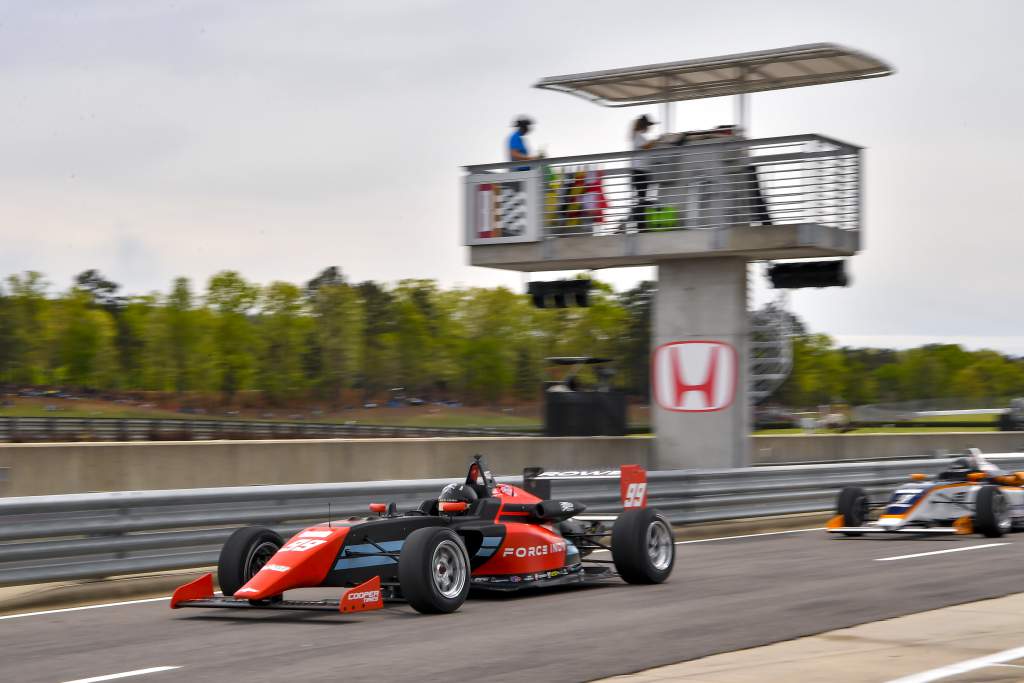
JB: As part of IndyCar’s Race for Equality & Diversity initiative a new team has been launched this year with the aim of focus on “hiring and developing Black American men and women mechanics, engineers, staffers and drivers”.
Making African American people feel welcome in racing paddocks is a big part of helping that community feel more at home, and so the efforts being made here are crucial. While most of the wider motorsport world focuses on words and hashtags, IndyCar and its organisation have taken action.
View the USF2000 entry list here
https://www.usf2000.com/teams-drivers/current-drivers
RH: I think a lot of eyes will be on the Force Indy team in 2021, and this will definitely add some pressure on rookie driver Myles Rowe. That said, Myles will have an excellent team around him and if he remains true to the expectations for a freshman in the series, he’ll start to acquire the car and track experience that he’ll need to be able to succeed in 2022.
As I like to point out, two years at each level is ideal. Drivers can learn the car, the new levels of performance, and how the increased horsepower, grip, downforce, and braking changes how they approach each track during their first year at any level.
Then, in year two, they can battle for the championship. Rowe will certainly have his hands full with what will be a strong and deep USF2000 field in 2021, with 26 cars starting the season.
IW: Road to Indy drivers don’t build up a following over in Europe in the same way that drivers in F3 and Formula 4 do, but what Force Indy is doing will hopefully resonate beyond the USA. The commitment to diversity in all areas of the team is what makes Force Indy stand out not in junior single-seaters, but the whole of sport.
Qualifying sessions for the MRTI double-headers were held on Friday. There were poles for Linus Lundqvist and David Malukas in Indy Lights, Braden Evens and Christian Rasmussen in Indy Pro 2000, and Yuven Sundaramoothy and Nolan Siegel in USF2000


